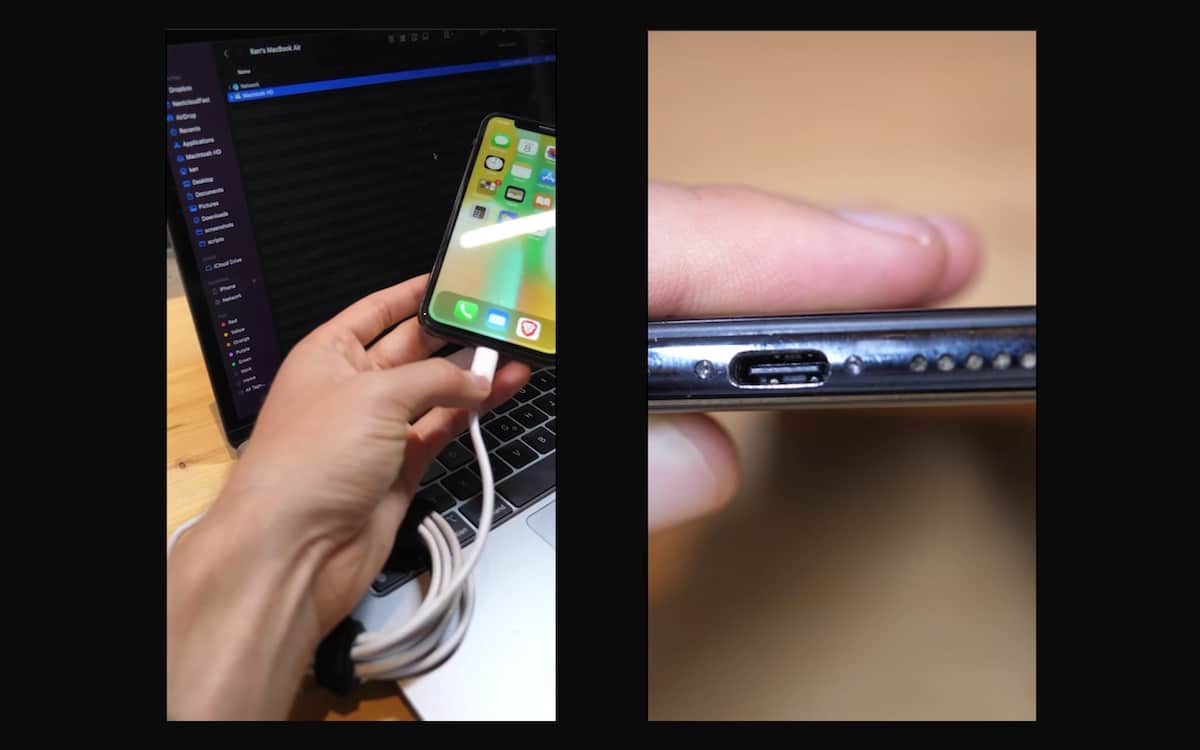iPhone users have been demanding Apple to switch to USB-C charging port for a while now. Beating Apple to it, a robotics engineering student, Ken Pillonel created the first functional USB-C iPhone. Pillonel was able to equip an iPhone X with USB-C charging port that charges the smartphone and transfers data.
A USB-C charging cable is more durable and powerful. Plus, users can use any end of the wire to charge their devices, there is no right or wrong way like MacBooks. Apple has been reluctant to make the switch and Ming-Chi Kuo earlier said that the company is unlikely to change the charging port of iPhones any time soon. However, the EU proposed a new rule for mobile manufacturers to sell products with a single standard USB-C port, recently. That means, Apple might be forced to replace the proprietary Lightning port from all iPhones, iPads, and AirPods in place of USB-C in Europe.

The world’s first USB-C iPhone is here
Pillonel uploaded the short clip which shows the first USB-C iPhone working properly. After months of research and hard work, he was able to successfully house the USB-C port in an iPhone. In May, he uploaded the first part of his experiment on his YouTube channel. Currently, the complete video of the entire process is under editing and will be released soon.
This is it. I’ve finally built the World’s First iPhone with a USB Type-C port. It supports charging and data transfers. The first part was about getting the electronics to work. Then the next step was to reverse-engineer the Apple C94 connector and make my own PCB with a female USB C port. Then the schematics for the project were set and tested and the final was to make it fit inside the iPhone! I’m very happy to show you this mod in the form of a Youtube Short. The full length video is coming out soon, I’ve started the editing.
This invention supports the Right to Repair movement that professes by giving people the necessary information and tool, companies will foster creativity and progression of technology. Apple’s co-founder, Steve Wozniak says that the ‘Right to Repair’ policy, saying that enabling consumers to repair their devices will flourish creative minds as it did for him when he first started to build computers. Referring to Apple II’s success, he argued that it was a profitable product because users were able to modify the tech according to their needs and catered to their technical curiosity. Therefore, this invention is a win for the Right to Repair movement.
There were a lot of good things about that being so open that everyone could join the party. Like the movie ‘Beautiful Minds’, when companies cooperate with each other they can actually have better business than if they’re totally protective and monopolistic and not working with others just totally competitive.